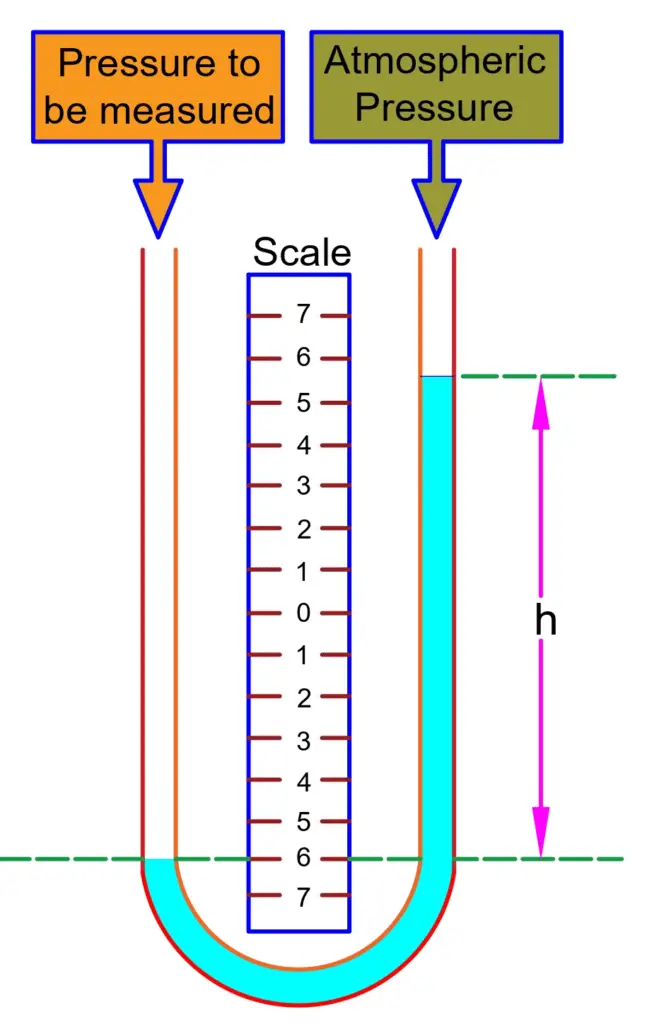The U-tube manometer principle is that when we apply pressure to be measured to one side of the tube produces a movement of liquid. The U-tube manometer has a U-shaped glass tube and a measuring scale. A manometer is an instrument that measures the gauge pressure. It is a primary pressure calibration instrument most suitable for the calibration of other pressure gauges.
Principle of U-tube Manometer
The U-tube manometer has openings at both ends of it.

The pressure to be measured is applied to one opening end of the U-shaped glass tube. The applied pressure presses the liquid and thus the liquid moves down the tube. We can see in the above picture that the level goes down in the left leg of the tube, while in the right leg the liquid level rise. A scale fitted between the tube measures this displacement.
Suppose the applied pressure to the left leg of the tube becomes constant. When the pressure exerted by column h balance the pressure applied to the left side of the manometer, then the liquid will stop moving in the tube.
We can calculate the applied pressure by knowing the column of liquid, and the density of the filling liquid.
The applied pressure can be calculated using the below-given formula.

Commonly Used Liquids in Manometer
The followings are the commonly used liquids and their densities,
| Mano metric fluid | Density(kg/m3) |
| Water | 1000 |
| Oil | 800-950 |
| Mercury | 13560 |